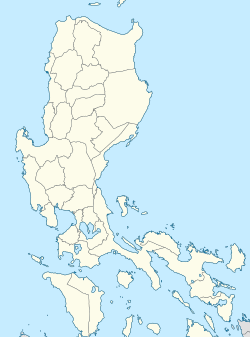 | |||||||||||
| General information | |||||||||||
| Location | Rizal Avenue, Santa Cruz Manila, Metro Manila, Philippines | ||||||||||
| Owned by | Department of Transportation – Light Rail Transit Authority | ||||||||||
| Operated by | Light Rail Manila Corporation | ||||||||||
| Line(s) | LRT Line 1 | ||||||||||
| Platforms | 2 (2 side) | ||||||||||
| Tracks | 2 | ||||||||||
| Connections | Future: 8 Lerma | ||||||||||
| Construction | |||||||||||
| Structure type | Elevated | ||||||||||
| Parking | Yes (Manila Grand Opera Hotel & Casino, Amaia Skies Avenida) | ||||||||||
| Accessible | Yes | ||||||||||
| Other information | |||||||||||
| Station code | GL11 | ||||||||||
| History | |||||||||||
| Opened | May 12, 1985 | ||||||||||
| Services | |||||||||||
| |||||||||||
| Out-of-system interchange | |||||||||||
| |||||||||||
| |||||||||||
Doroteo Jose station is an elevated Light Rail Transit (LRT) station located on the LRT Line 1 (LRT-1) system in Santa Cruz, Manila. The station is situated on Rizal Avenue and slightly past Doroteo Jose Street. Both the station and the street are named after Doroteo Jose, a Filipino who was arrested by Spanish authorities in 1898 for leading a movement against a corrupt archbishop. [1] [2]
Contents
Doroteo Jose station is the second station of LRT-1 north of the Pasig River, after Carriedo station. It is the tenth station for trains headed to Dr. Santos and the sixteenth station for trains headed to Fernando Poe Jr.
The station is near the Manila City Jail and the Fabella Memorial Hospital. Popular shopping centers such as the Isetann Cinerama Recto and the Odeon Terminal Mall are also nearby. Due to its position of being near the University Belt, the station is also close to educational institutions of the University Belt. It is one of the only stations on the line where commuters can transfer from one platform to another without having to go down to the street level. However, unlike the stations of Baclaran, Central Terminal, Carriedo, Balintawak, and Fernando Poe Jr., commuters still have to exit the fare gates to access the walkway above the platforms.










